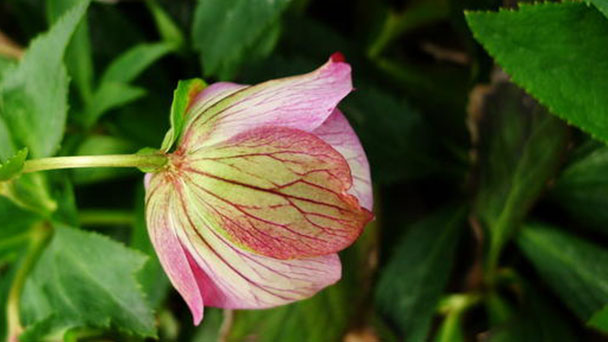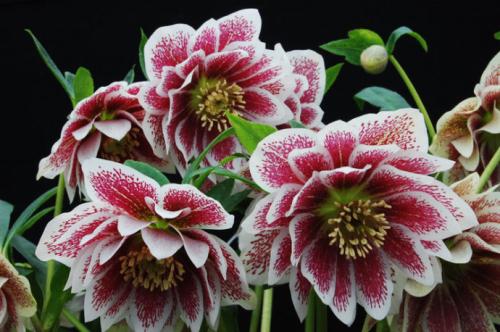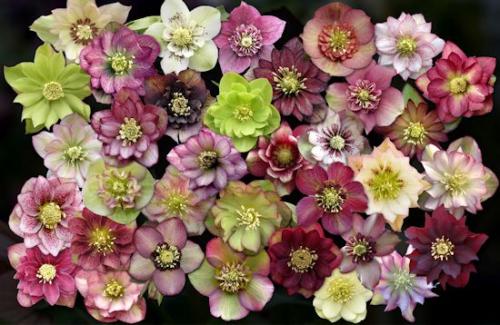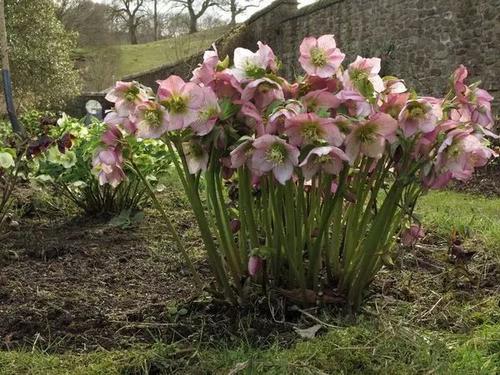Tibetan hellebore profile
Written by Maggie
Mar 16 2021

Tibetan hellebore is a perennial evergreen herb, rhizomes ca. 4 mm in diameter, densely fleshy long fibrous roots. Stems are 30-50 cm tall, glabrous, distally branched, with 2-3 sheathlike leaves at base, more cold resistant, like half shade environment, avoid dry and cold. It is mainly grown in Sichuan, Gansu, Shaanxi and other places, many places have introduced cultivation. Tibetan hellebore can be used as medicine; The flowering period is from winter to the next spring, and it has certain ornamental value in gardens.
Tibetan hellebore picture

Morphological characteristics of Tibetan hellebore
Rhizome
Tibetan hellebore is a perennial evergreen herb with a rhizome about 4 mm in diameter and dense fleshy long fibrous roots. Stems are 30-50 cm tall, glabrous, distally branched, with 2-3 sheathlike leaves at base.
Leaf
The basal leaves of tibetan hellebore are 1 (-2), glabrous and long-stalked. Leaf blade reniform or pentagonal, 7.5 -- 16 cm long, 14 -- 24 cm wide, flocculate triploid, middle whole lobes oblanceolate, 1.6 -- 4.5 cm wide, margin densely serrate above lower part, lateral whole lobes short stipitate, flabellate, unequal triploid;Petiole 20-24 cm long.
Cauline leaves are subsessile, leaf blades are smaller than basal leaves, central whole lobes narrowly elliptic, lateral whole lobes unequal to two or three deep lobes.
Flowers
Flowers of Tibetan hellebore have 1-2 stems or branch tips, open when basal leaves are just extracted, glabrous; Sepals are initially pink, greenish in fruit, elliptic or narrowly elliptic, (1.1-) 1.6-2.3 cm long, (0.5-) 1-1.6 cm wide; Tibetan hellebore has 8-10 petals, yellowish green, cylindric funnelform, shortly stipitate, 5-6 mm long, ventral slightly lobed; Stamens are (4.5-) 7-10 mm long, anthers elliptic, ca. 1 mm, filaments narrowly linear; Tibetan hellebore has 2-3 carpels, ca. 1 cm, style subequal to ovary.
Fruit
Follicles of Tibetan hellebore, 1.6 -- 2.8 cm long, 0.9 -- 1.2 cm wide, with transverse veins, beak length ca.6 mm; Seeds are elliptic, oblate, 4 -- 5 mm long, ca. 3 mm wide, smooth, with 1 longitudinal rib.
The flowering stage of Tibetan hellebore is April and the fruiting stage is May.

Growth environment of Tibetan hellebore:
Tibetan hellebore is an evergreen perennial herb. It is not easy to grow well because acidic soil, arid and poor conditions and full sunlight are not suitable for it to grow. Tibetan hellebore is suitable for planting in moist, humus-rich alkaline soil, and preferably in areas with scattered light.
Tibetan hellebore distribution range
Tibetan hellebore is distributed in Europe, the Caucasus, western China.
Growing methods of Tibetan hellebore:
The variety plant growth potential is strong, late maturity, fruit quality is very good. The plant growth is vigorous, appropriate small scaffolding plastic, medium and short shoot mixed pruning.Loading quantity should be strictly controlled in cultivation, so as not to affect fruit color and reduce fruit quality. The young tree of Tibetan hellebore is easy to yield early, but too much fruit often leads to early senility of the tree, so we should pay more attention to the production.The wasp should be prevented from harming the fruit grains during the mature period of fruit.
The value of Tibetan hellebore
Tibetan Hellebore is an evergreen perennial flower, which can blossom for many years after planting in one year. It has a unique flower shape and elegant color, and the flowering period is around Christmas. Quiet and elegant flowers like white roses, widely used in the layout of small gardens and potted ornamental. The basin cuts the trendy flowers that is winter spring Christmas interior decoration, match to plant at flower border or lawn edge, present the temperament that gives primitive simplicity and elegance.

Latest Updated
- Benefits of Bugleweed - 7 Science-backed Health Benefits
- Bugleweed Dangers & Side Effects - Is It Poisonous?
- How to Plant Evergreen Trees - What You Should Know
- When to Plant Evergreens - Grow Guide for Evergreen Trees
- 12 Wonderful Evergreen Shrubs for Your Garden
- 12 Popular Evergreen Plants with Pictures for Beginners
- When And How To Prune A Lilac Bush Like a Pro
- How to Grow & Care for Lilac Vine (Hardenbergia Violacea)
- Japanese Lilac Tree (Syringa Reticulata) Care & Propagation Guide
- Shumard Oak Pros and Cons - What to Know
Popular Articles
- Winter maintenance of Antirrhinum Majus
- How to Grow Terminalia Mantaly Tree
- How to Grow and Care for Crossostephium Chinense
- How to grow Antirrhinum Majus in spring
- Peristeria Elata (Dove Orchid) Profile: Info & Care Guide
- Underwatered Snake Plant (Sansevieria Trifasciata) - Signs And How To Fix
- How to Care for Brazilian Jasmine Plant (Mandevilla Sanderi)
- How to Grow & Care for Graptopetalum Purple Delight in Summer
- Rosa Chinensis (China Rose): Plant Growing & Care Tips
- How to Care for Baby Sun Rose (Aptenia Cordifolia)